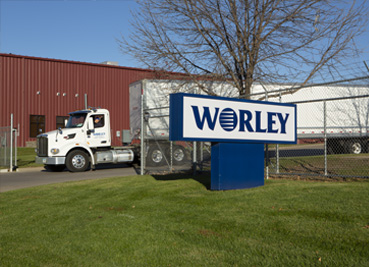
This week, President Biden approved the proposed huge oil drilling project in Alaska known as Willow. This was done over the protests surrounding its climate and environmental impacts, as well as the objections of those who view it as a broken promise by Biden . Quite probably as an offset to this approval, he has also announced restrictions on offshore drilling in the Arctic Ocean and across the North Slope of Alaska. Critics say these restrictions however, will not offset the $8 billion cost of Willow and the expected 600 million barrel output over the next 30 years.
What has not been discussed yet is how the crude oil will move from the drilling sites. No doubt, pipelines will come into play, and will be accompanied by their own controversies. It is becoming increasing more difficult to lay an underground pipeline in the United States, primarily because of the environmental impacts they may have on the areas through which they run. The U.S. portion of the Keystone pipeline was closed last year, after several ruptures in the line contaminated surrounding areas. Even so, pipelines still are the safest, most efficient, lowest cost method of moving oil and gas. In spite of well-publicized spills, according to the Liquid Energy Pipeline Association (LEPA), 99.999% of crude oil and petroleum products delivered by pipeline reach their destination safely.
There are approximately 230,000 miles pf pipeline in the U.S., and this system moves about two-thirds of the oil transported in the country. Water carriers handle about 28%, with rail and motor carriers sharing the other 6%.
To fully appreciate the low carbon footprint and volume of a pipeline, consider the following. A modest-sized pipeline will transport about 150,000 barrels daily. To move this volume by motor carrier would require 750 tanker trucks daily, delivering a load every two minutes around the clock. Opting for rail would require a 75-car train, with each tank car carrying 2,000 barrels, arriving and unloaded every day.
While there are some pipelines that handle such commodities as water and chemicals, most of the pipeline mileage is devoted to oil, refined products and natural gas, with the primary usage being for oil and oil products. In 2020 (latest year available) 11.9 billion 42 – gallon barrels of crude oil and 8.5 billion barrels of petroleum products were delivered.
Because of the significant cost of pipeline infrastructure, like the railroads, pipeline companies have a high fixed cost. Oil companies must acquire land and easements, construct the lines and maintain them. The Trans – Alaska Pipeline System, for example was built at a cost of $8 billion.
The level of variable costs is extremely low compared to other modes and consists primarily of fuel and labor. Very little fuel is required to operate pumps and terminals, and the pipelines employ only about 8000 people for every 10,000,000 employees motor carriers would need to move comparable ton – miles.
As mentioned earlier, the method of transport from the new wells is yet to be decided, but the story of the Trans – Alaska Pipeline System (TAPS) called the Alyeska Pipeline in Alaska and the Alaska Pipeline in the lower 48 states, describes some of the issues involved with Arctic construction. TAPS runs 800 miles from Prudhoe Bay, Alaska on the Arctic Ocean to the Gulf of Alaska at Valdez. The 48 – inch line was built between March 27, 1974 and May 31, 1977, at a cost of $8 billion. At the peak of the work, 21000 people were employed in the construction. Thirty one were killed in accidents.
Due to the harsh terrain of fault lines, mountain ranges, and bogs, construction was a significant challenge. Much of the line was built above ground because of the permafrost, making it necessary in 554 instances to bridge the migration paths of caribous and moose.
The line crested at Atigun Pass at 4,739 feet and had grades of as much as 55 degrees. It crosses 500 rivers and streams and three mountain ranges. Where the line is buried it is laid in an insulated ditch. Refrigeration plants must pump cold brine into the casings to keep the soil cooled. In some areas, even the supports are cooled. Oil comes out of the ground at about 180 degrees F. and is transported at 120 degrees. Left at that temperature, the lines or supports would melt the permafrost causing the line to sink, possible resulting in damage.
While consideration for the environment is important in any project, and while accidents have happened, the pipeline continues to pass the safety, cost, and environmental tests.